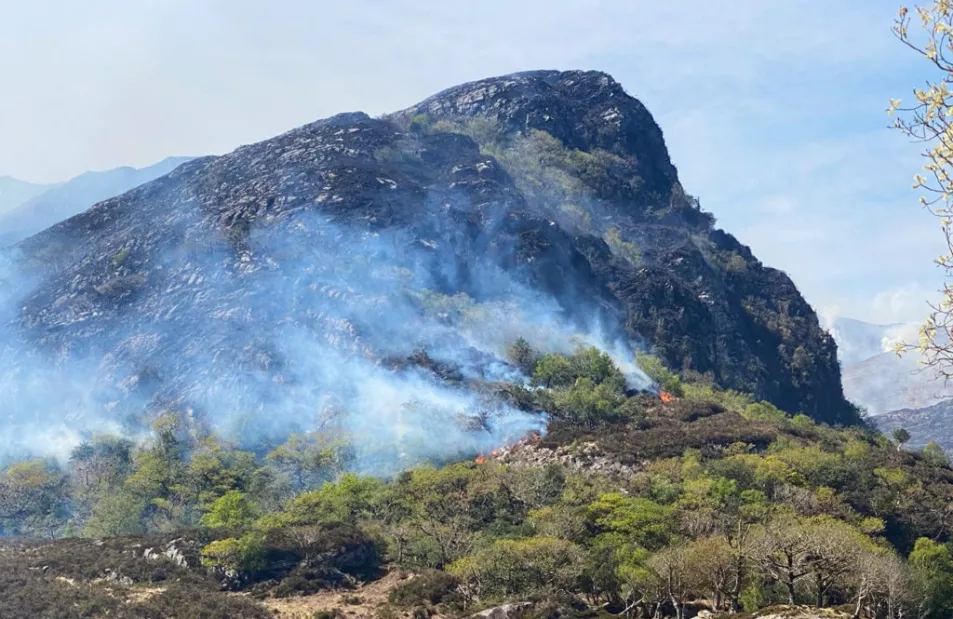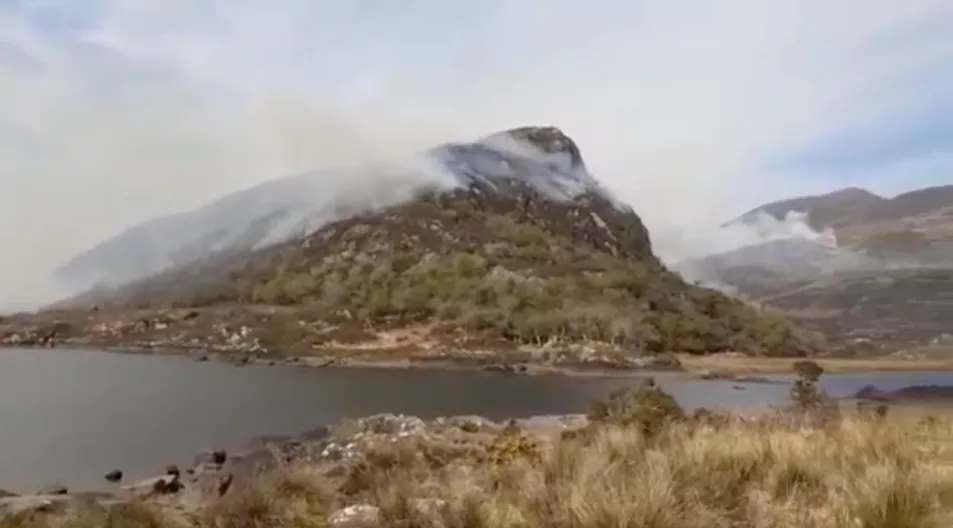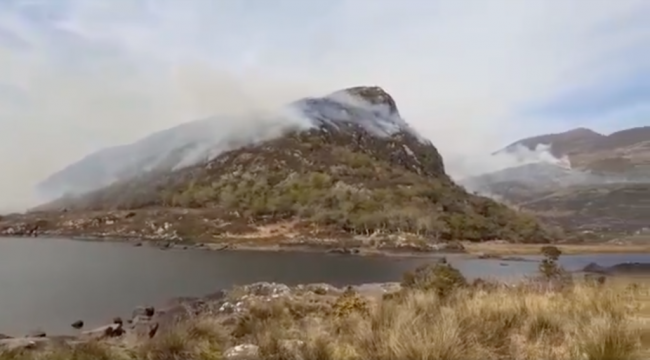The investigation into the Killarney wildfires, which devastated thousands of acre of habitat in the Unesco biosphere reserve of the Killarney National Park earlier this year, is “pointing towards” accidental.
Over €21,000 was spent by the National Parks and Wildlife Service (NPWS) on private aerial support to help contain the three-day fire which spread for miles along the south western section of the park in late April.
Inspector Gary Thompson, who is in charge of the garda inquiry, said forensic experts brought from the technical bureau in Dublin had identified a single origin, alongside the main N71, at the Five Mile Bridge near the Eagles Nest which was first attended to by the fire service.
The cause was not deliberate, it was felt, and was “pointing towards” accidental, but it was not clear exactly what had sparked the fire, he said.
The inspector said burning for land clearance appeared to be ruled out and the findings have been passed to the National Parks and Wildlife Service.
The Department of Housing and Heritage has revealed how the US national park alongside the Canadian border currently in the middle of its wildfire season, is assisting the analysis of the impact of the Killarney fires.
The one million acre Glacier National Park in Montana alongside the Canadian b0rder, the region very much in middle of its annual wildfire battle, is working with the Killarney Park in satellite mapping. Ecological surveys of the damage are also being carried out, the NPWS said.

The one million acre Glacier, home to spectacular lakes and forests as well as rugged mountains became a sister park of Killarney last March.
The Killarney agreement with the US national park is the first of its kind here.
“NPWS in conjunction with their sister park, Glacier National Park Montana have compiled a detailed map to contrast the satellite imagery available to both institutions and have worked on shared experiences to maximise the results for best interpretation.
“Regional management with input from the services scientific unit of NPWS have commissioned a suite of ecological surveys to assess the impacts of the fires on species and habitats. This coupled with a larger and broader long term ecological surveys will allow the Department to determine the long term impacts of the recent fires,” said the Department of Housing and Heritage which is in charge of the NPWS.
The outcome of these longer term surveys will aid management in dealing with the impact of this fire and will also establish a detailed baseline for both habitats and species impacted as a result of fires in general, it said.
The three-day Killarney fire was only brought under control with aerial firefighting support from the Air Corps and a private company.
Aerial surveying was also carried out to assist the Garda forensic inquiry.
The bill, which is being paid for by the NPWS, for the private support by Executive Helicopter Maintenance Ltd in Lougrea Co Galway was €21,500 including VAT, documents released under Freedom of Information reveal.
Gorse fires are an annual occurrence in Killarney within and surrounding the national park, causing massive damage to habitat and species and cost Kerry County Council and the NPWS thousands of euro in fire fighting.

Many of the fires are linked to sheep grazing clearance each year with the hills burnt to encourage new growth for the flocks surrounding the park.
No prosecutions have ever been brought despite a clamour by locals and environmentalists.
This weekend the Kerry branch of Extinction Rebellion scheduled an event at Killarney House calling for the annual gorse fire problem in Killarney to be addressed once and for all and measures to be taken to put a stop to it.
The Killarney Nature Conservation Group has called for extra patrols to be put in place each Spring as well as extra wildlife rangers.







